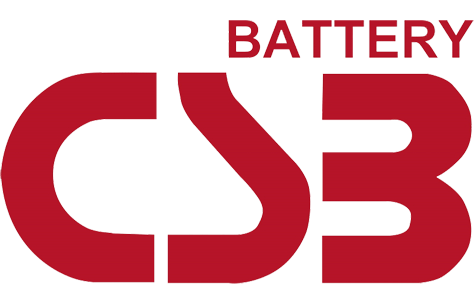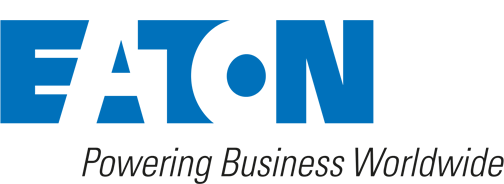Backfeed Protection in UPS Explained
In today's digitally driven world, the stability and reliability of power supply are of paramount importance. To sustain continuous operation, an Uninterruptible Power Supply (UPS) system is often at the backbone of many operations. However, the role of UPS in backfeed protection remains largely misunderstood. In essence, backfeed protection safeguards both personnel and equipment from potential harm and damage, ensuring optimal performance and safety of your systems.
A well-designed backfeed protection in UPS systems contributes to improved hardware longevity and mitigates the risk of electrical shocks, which can be very catastrophic. The enlightening journey that we're embarking on aims to peel back the layers of backfeed protection in UPS systems, their vital role, standards, and legislations emphasising it, and its intricacies that provide isolated circuits safety.
Join us on this enlightening expedition as we delve into the world of backfeed protection in UPS systems, unveiling the mystery behind its critical role in energy infrastructure. By the time you turn the last page, you will have a comprehensive understanding of backfeed protection, and you'll relish in the confidence that your systems are safely guarded against backfeed. So polish your knowledge lenses, ready your curiosity, and settle comfortably into this exploration of a secure, reliable power supply.
Defining Backfeed Protection
Electricity is a fundamental resource that powers our day-to-day lives. In this vein, Uninterrupted Power Supplies (UPS) provide a critical lifeline when the main power source fails. However, they can pose an inherent risk: the possibility of electrical backfeed. This is where backfeed protection enters the picture as safety's unsung hero.
Backfeed protection plays an indispensable role within a UPS system, guarding against current feedback from the UPS output that could lead to potential electric shocks. Think of it as a knight in shining armour, constantly on vigil for any feedback currents and swiftly barricading them to prevent any harm.
Additionally, backfeed protection extends its defence mechanism even further by protecting the bypass line from a static switch failure. Imagine a meticulously organised soccer defence strategy where the players work in harmony to block their goal. Similarly, backfeed protection checks any failure that might occur in the static switch, shielding the entire bypass line.
Let's highlight some important implications of backfeed protection in a UPS system:
- Enhances Safety: By inhibiting electrical backfeed, it ensures a safe environment for equipment and personnel alike.
- Reduces Power Interruption Risks: Backfeed protection minimises the risk of sudden supply cut-offs that could be initiated by feedback currents.
- Shields Against Equipment Damage: Electrical equipment is safeguarded from currents that could induce malfunctions or complete failures.
In essence, backfeed protection is an integral element of any UPS solution. It brings to life the adage - that prevention is better than cure - by actively circumventing possible electrical hazards. So next time when you find yourself relying on a UPS system during a power failure, take a moment to appreciate the silent workhorse that is backfeed protection, diligently protecting you from potential electrical shocks.

Standards and Legislation Emphasising Backfeed Protection
The importance of backfeed protection in Uninterruptible Power Supply (UPS) systems is globally recognised due to the numerous potential safety hazards that could occur without it. Several international standards and legislations have robustly outlined the essential need for backfeed protection, emphasising the role it plays in enhancing safety and reducing equipment damage risks. In this section, we'll delve into the specifications provided by IEC 62040-1:2008, BS EN 62040-1:2019, OSHA, and NEC, underlining their significant contributions to fostering more efficient and safer UPS systems.
IEC 62040-1:2008
International Electrotechnical Commission (IEC) 62040-1:2008 is a well-known standard that universally dictates the safety requirements for UPS systems. This standard explicitly requires backfeed protection, demonstrating the vital part it plays in overall safety protocols:
- Backfeed prevention is highlighted as a necessary safety feature.
- Optimum settings are recommended for backfeed protection devices, ensuring not only their functionality but also longevity.
- Guidelines for routine inspection to ensure continuous device operation are included.
BS EN 62040-1:2019
The BS EN 62040-1:2019 standard takes a comprehensive approach towards backfeed protection. It permits for backfeed protection to be either internal or external to the UPS, broadening the perspectives on the incorporation of safety measures in UPS systems:
- A tailor-made approach to backfeed protection, allows companies to choose the most effective method for their particular system.
- Emphasises the need for continual monitoring and maintenance of backfeed protection to ensure its effective functionality.
- Encourages innovation and technological advancement in the design and implementation of backfeed protection devices.
OSHA
The Occupational Safety and Health Administration (OSHA) is another critical entity in the conversation around backfeed protection standards. OSHA's safety standards provide a robust framework that emphasises the urgent need for backfeed prevention:
- Cites clear potential hazards of non-compliance with backfeed protection rules.
- Stipulates penalties for non-compliance, underscoring the uncompromising stance on safety.
- Lays out detailed instructions on backfeed protection, fused with real-world applications and scenarios.
NEC
The National Electrical Code (NEC) is revered amongst electricians for its detailed safety instructions relevant to all areas of electrical installations. Among these, backfeed protection acquires a prominent position:
- Mandates specific requirements to be met by backfeed protection devices.
- Provides tools and resources to understand and apply these guidelines in everyday situations.
- Calls for the regular replacement or upgrade of outdated backfeed protection devices to ensure maximum safety.
In today's ever-evolving technological landscape, these standards and legislations play a crucial role in maintaining safety and efficiency in UPS systems. By enforcing backfeed protection, potential risks can be minimised, thereby creating a safer environment for everyone involved. As such, understanding and effectively implementing these regulations is pivotal for both individuals and entities finding themselves within the orbit of UPS systems. It's not just about meeting standard requirements; it's about creating a culture of safety and responsibility.
Role of UPS Systems in Backfeed Protection
Understanding the crucial role of UPS systems in backfeed protection requires a deep dive into their principal frameworks and functionalities. Uninterruptible Power Supply (UPS) systems play a vital role in providing an unremitting power supply in the case of power disruptions. But their importance extends beyond guaranteeing constant electricity flow. UPS systems also safeguard other appliances from potential backfeed. Backfeed can cause significant harm and even pose substantial safety risks, such as fires caused by short circuits.
Burn-in Tests
Burn-in tests are an integral part of ensuring UPS systems' effectiveness in backfeed protection. These tests aim to identify failing units within the system to ensure optimal performance and longevity. For these trials, UPS units routinely operate at around 80% of their nominal power. Worth noting, that they do this in both double-conversion and bypass modes. This rigorous testing process ensures that the UPS system can handle high usage demands and adequately protect against backfeed.
Static Switch
Another prominent component in maximising the efficacy of a UPS for backfeed protection is the static switch. This switch is a fundamental element of UPS systems, predominantly composed of antiparallel-connected thyristors. The purpose of these switches is to swiftly divert the power source from the inverter to bypass mode when a power anomaly is detected. This rapid switch helps maintain a steady power flow while protecting the system from potential backflow damage.
Data Line Protection
Finally, UPS systems play a critical role in protecting the data line. This part of a system could be severely damaged by surges or lightning strikes, which the UPS unit shields against. The system's data line protection ensures the safe and uninterrupted operation of connected devices, which, in turn, increases the longevity and reliability of the entire system.
The role of UPS systems in backfeed protection cannot be overstated. By conducting burn-in tests, employing static switches, and offering data line protection, these systems mitigate potential harm to both the electrical devices and the users. A closer appreciation of these features and functionalities underscores the importance of using UPS units in any power-dependent machinery.
Key Specifications of UPS Systems in Relation to Backfeed Protection
In this fast-paced digital world, uninterruptible power supply (UPS) systems have become a vital instrument, protecting hardware such as computers, data centres, telecommunication equipment, or even entire buildings from unexpected power disruptions. One of the key aspects to consider when choosing a UPS system is its relation to backfeed protection—a happy element in the world of electrical power systems designed to protect both equipment and personnel. To underline the gravity of this connection, let's delve into the key specifications of UPS systems relevant to backfeed protection.
Battery Voltage
Battery voltage denotes the electric potential difference across its terminals—essentially, it reveals how much electric power a UPS battery can deliver. Typically, UPS systems use sealed lead-acid (SLA) batteries, featuring voltages ranging from 12V to 120V, or even more. A higher battery voltage yields more power output, paving the way for wider backfeed protection. Nonetheless, it's crucial to balance this power with the demands of the protected hardware to ensure optimal system performance and longevity.
Discharge Battery Voltage
Next up is the discharge battery voltage—commonly misunderstood, yet vitally critical to the health of your UPS system. It is the minimal allowable voltage level that a battery can discharge to. Plunging below this limit can significantly shorten the battery lifespan, exposing the system to higher risks of backfeed damage. Most commonly, the discharge voltage hovers around 10.5 volts for a typical 12-volt SLA battery. But again, these values may vary depending on the specific battery type and the UPS model.
Max Current Discharge
Max current discharge is perhaps one of the most critical specifications for a UPS system. It signifies the maximum level of current that a battery can deliver at once, influencing both the runtime and the level of equipment it can support. UPS devices with higher discharge rates can support more robust systems, translating into comprehensive backfeed protection. But, just like the rule of thumb goes with other specs - a balance needs to be struck between the existing equipment and the UPS capabilities.
Battery Power in VAH
Lastly, we have the battery power in VAH (Volt-Amperes Hour), a term that reflects the actual usable power that a UPS system can provide over a determined period. It's a helpful comparison tool when sizing up different UPS units for your power needs. A higher VAH means extended runtime and potentially broader backfeed protection. At the same time, it provides a more accurate picture of the UPS capabilities over the standard 'watt' specification, which often excludes critical factors like power factor and efficiency.
Quoting a line from our additional notes, "Specifications for UPS systems include battery voltage, discharge battery voltage, max current discharge, and battery power in VAH." Now, it should be somewhat clearer how these essential parameters influence the degree of backfeed protection a UPS system can offer. Remember, there isn't a 'one-size-fits-all' solution when it comes to UPS systems and backfeed protection. Therefore, understanding your specific power requirements and knowing how these specs align with those needs is key to making an informed choice.
Backfeed Protection's Role in Isolated Circuits Safety
When it comes to ensuring the safety and functionality of isolated circuits, backfeed protection plays a pivotal role that might be often overlooked. It serves as a reliable shield, particularly in the event of a mains supply failure or a fault in an Uninterruptible Power Supply (UPS) device. The role of backfeed protection has become even more critical in today's digital age, with businesses depending on technological infrastructure to support their activities.
Backfeed protection primarily functions as a safety mechanism that effectively blocks reverse power flow from a UPS to its main supply. This protects not only the equipment connected to the UPS but also the technicians who might be working on supposedly de-energised circuits.
The benefits of backfeed protection in isolated circuits are manifold:
- Safety: By preventing the backflow of electricity, it minimises the risks of electrical shocks, thereby ensuring the safety of both the people and the equipment involved.
- Prevention of Equipment Damage: It efficiently blocks the power flow to devices that aren't designed to handle such a charge, thus averting the damaging effects of unexpected power surges.
- Enhanced Equipment Efficiency: By regulating power distribution, backfeed protection ensures optimal performance of your equipment.
An essential component of electronic safety, backfeed protection can be likened to a sentinel standing guard. Its role in preventing power from flowing back into the system during UPS faults ensures operations are not disrupted and high-value equipment remains protected. It is quite akin to having a safety net, catching potential electrical mishaps and safeguarding your digital assets.
While discussing backfeed protection, it's important to remember that it's not just about installing backfeed protection devices—it's about regular maintenance and checks as well. Keeping the backfeed protection system in optimum working order is a crucial part of ensuring the safety and smooth operation of your systems.
In a world increasingly dependent on technological infrastructure, backfeed protection's role in ensuring the safety of isolated circuits is vital. It anticipates problems, acts as a barrier, and maintains harmony among your electronic devices, making it an investment worth considering for its long-term benefits and the peace of mind it offers.
Conclusion
Power protection is an absolute necessity in our increasingly digital world, where even a minor power interruption can cost businesses significant time and money. This is why understanding the concept of backfeed protection in Uninterruptible Power Supply (UPS) systems is vital. It's an important safety feature that protects humans and the entire electrical system from the life-threatening effects of reverse power flow.
Backfeed protection, which is emphasised by legislation and standards like IEC 62040-1:2008, BS EN 62040-1:2019, OSHA, and NEC, can be efficiently handled by a well-engineered UPS system. These regulations ensure that UPS systems adhere to safety, design, and functionality specifications concerning backfeed protection.
Modern UPS systems with backfeed protection conduct regular burn-in tests, include a static switch, and provide data line protection. They are also evaluated based on battery voltage, discharge battery voltage, maximum current discharge, and battery power in VA to assess their efficiency in managing backfeed. Since safety is paramount, particularly in isolated circuits, the role of backfeed protection is invaluable.
In this context, Secure Power, the UK's leading provider of Uninterruptible Power Supply (UPS) systems, ensures robust power protection for businesses with top-tier three-phase UPS solutions that adhere to all these critical specifications, ensuring meticulous backfeed protection. To find out more about our products and services, don't hesitate to contact us here.
At the end of the day, your power protection solution must prioritise safety, more so when backfeed is a risk. Always consider the quality and efficiency of a UPS system's backfeed protection when investing in one, as it can play a significant role in protecting your assets, preventing hazards, and ensuring business continuity.
Frequently Asked Questions
-
What is backfeed in the context of Uninterruptible Power Supply (UPS) systems?
Backfeed refers to the flow of electricity from the UPS system back into the main power grid or utility lines. This can occur when the UPS system generates excess power or when the utility power fails and the UPS system starts to supply power to the grid.
-
Why is backfeed protection important in UPS systems?
Backfeed protection is important in UPS systems to prevent electrical hazards and grid instability. It ensures that the electricity generated by the UPS system does not flow back into the grid, potentially harming utility workers and causing damage to electrical equipment.
-
How is backfeed protection implemented in UPS systems?
Backfeed protection in UPS systems is typically achieved using transfer switches or bypass switches. These switches prevent the flow of electricity from the UPS system back into the grid and ensure that power is only supplied to connected devices or critical loads.
-
What are the potential risks of not having backfeed protection in UPS systems?
Without backfeed protection, UPS systems can potentially cause electrical accidents, such as electrocution or power surges, posing a risk to utility workers and damaging sensitive equipment. It can also cause power quality issues and disrupt the stability of the main power grid.
-
Are all UPS systems equipped with backfeed protection?
Not all UPS systems are equipped with built-in backfeed protection. When selecting a UPS system, it is important to check if it has proper backfeed protection mechanisms in place. It is recommended to choose UPS systems that comply with safety standards and regulations for backfeed protection.














